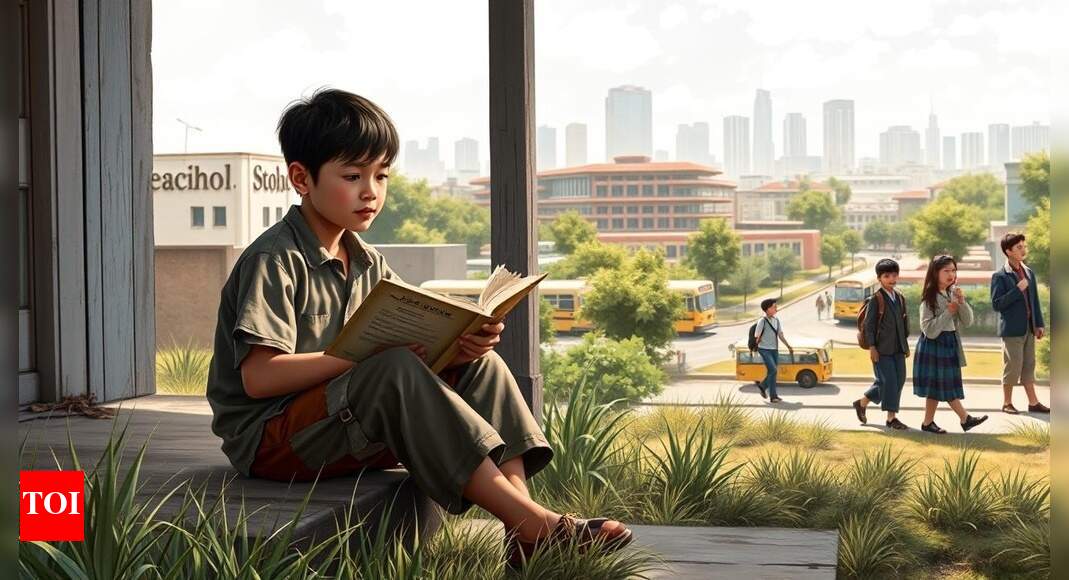Training in India is continuously described as the good equaliser, however for hundreds of thousands of households, it comes at massively other prices relying on the place they reside and which faculty they make a choice. The 2025 Complete Modular Survey: Training (CMS: E) unearths a stark truth: city families sending youngsters to personal faculties spend just about 9 instances greater than rural households whose youngsters attend executive faculties. From tuition charges to textbooks, uniforms, and personal training, the monetary burden of education exposes an alarming urban-rural and public-private divide, elevating urgent questions on fairness, get right of entry to, and the affordability of high quality training.
Executive faculties: The lifeline of rural training
Executive faculties proceed to function the spine of India’s training gadget, accounting for 55.9% of general scholar enrolment national. Their presence is especially sturdy in rural spaces, the place 66% of scholars attend executive faculties, in comparison to simply 30.1% in city centres. Those faculties continuously supply loose or nominal-cost training, making them an important useful resource for rural families with restricted monetary method.Then again, whilst enrolment is prime, public faculties continuously fight with infrastructural gaps, instructor shortages, and restricted get right of entry to to extracurricular and virtual finding out assets—components that push many city households towards inner most education regardless of the prime prices.
Non-public faculties: City households bearing the brunt
Non-public unaided recognised faculties make up 31.9% of general enrolment, with maximum scholars concentrated in city spaces. The fee distinction is eye-popping: households with youngsters in inner most faculties spend ₹25,002 in step with yr in step with scholar, in comparison with simply ₹2,863 for presidency faculty scholars. Tuition charges are the largest driving force of this divide. Whilst handiest 26.7% of presidency faculty scholars pay charges, a staggering 95.7% of personal faculty scholars do. In towns, this quantity rises to 98%, with a median annual direction charge of ₹15,143, just about 4 instances upper than the agricultural inner most faculty moderate of ₹3,979.
Past tuition: The hidden prices of education
College-related bills lengthen a long way past charges. Textbooks and stationery charge a median of ₹2,002 in step with scholar nationally, however city families constantly spend extra. Transportation and uniforms upload any other layer of economic pressure, particularly in towns the place commuting distances are longer and uniform requirements are stricter.Non-public training, as soon as regarded as a luxurious, is now a close to necessity for lots of city scholars. About 27% of scholars nationally attend training categories, with 30.7% in city spaces and 25.5% in rural districts. City families spend a median of ₹3,988 in step with scholar, greater than double the ₹1,793 rural moderate. This hole widens on the upper secondary degree: city households spend just about ₹9,950 on training, in comparison to ₹4,548 in rural spaces.
Who foots the invoice?
The survey highlights that households themselves finance 95% of tutorial bills, underscoring the heavy burden on families. Executive scholarships and assist play a minimum position, appearing as the main supply of investment for only one.2% of scholars.
Implications for fairness and coverage
The CMS: E findings spotlight deep-seated inequities in India’s training gadget. Rural scholars depend in large part on executive faculties, which stay inexpensive however continuously under-resourced. In the meantime, city households face hovering prices in inner most faculties, with tuition, training, and ancillary bills developing important monetary power.Policymakers face pressing demanding situations: methods to scale back the price burden for families, support infrastructure and high quality in public faculties, and make sure equitable get right of entry to to high quality training for all scholars, without reference to geography or financial background. With out intervention, those disparities would possibly proceed to widen, additional entrenching social and academic divides.

